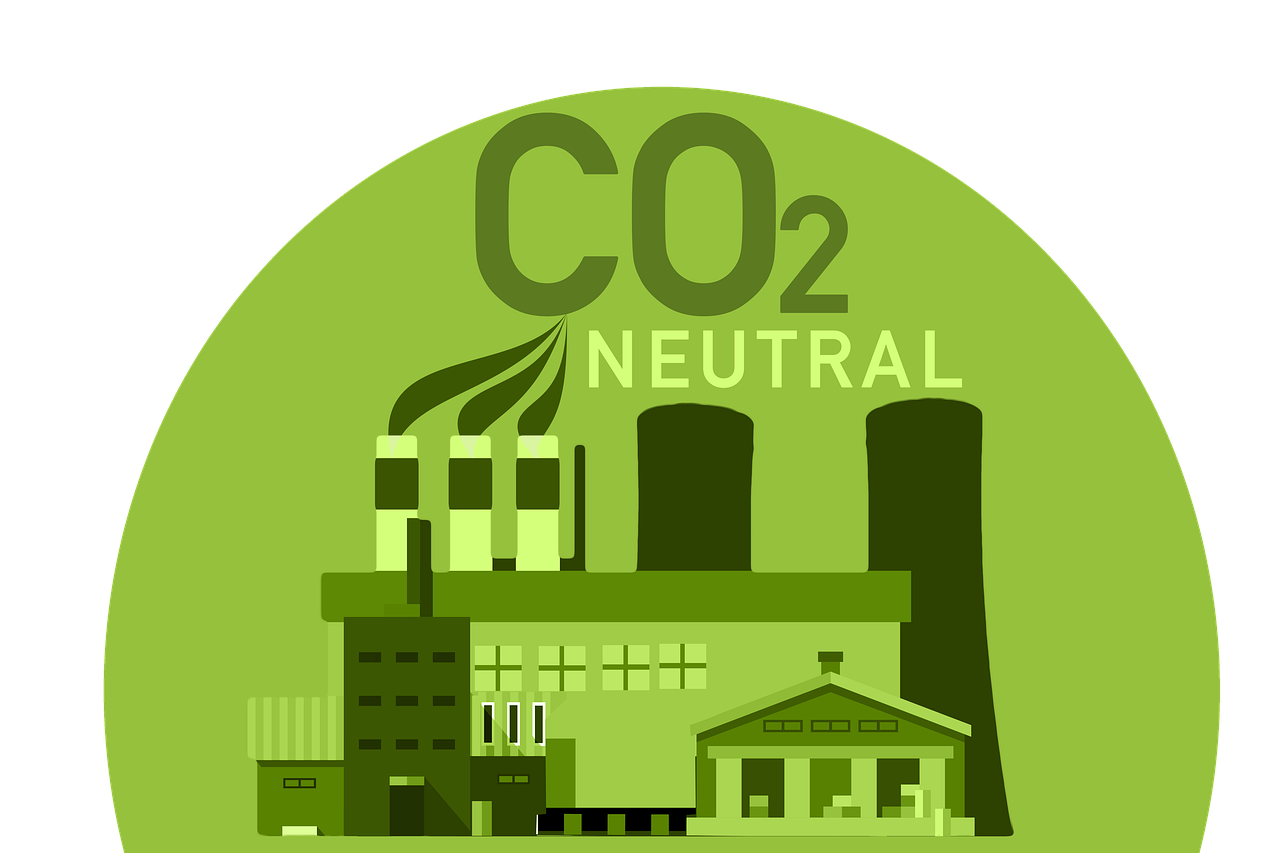Table of Contents
In an age where concerns about climate change and environmental sustainability are at the forefront of global discourse, the role of transportation in shaping our planet’s future cannot be overstated. While various modes of transportation exist, rail transport has emerged as a compelling solution in the pursuit of a greener and more sustainable future. In this article, we will delve into the advantages that rail transport offers for the environment.
In an era where climate change and environmental sustainability have become pressing global concerns, the significance of transportation in shaping the future of our planet cannot be emphasized enough. As we seek sustainable solutions to reduce our carbon footprint and mitigate the impact of human activities on the environment, the role of rail transport has come to the forefront as a compelling and eco-conscious choice. In this article, we will delve deeper into the myriad advantages that rail transport offers for the environment, emphasizing its potential to contribute significantly to a greener and more sustainable future.
Energy Efficiency: Rail transport is renowned for its exceptional energy efficiency. Trains are inherently more energy-efficient than many other modes of transportation, such as automobiles and airplanes. They require less energy per passenger or cargo ton-mile, making them a greener choice for long-distance travel and freight transport.
Reduced Greenhouse Gas Emissions: The environmental benefits of rail are closely tied to its lower greenhouse gas emissions. Trains produce fewer carbon dioxide (CO2) emissions per passenger-kilometer or ton-kilometer than cars or airplanes. This reduction in CO2 emissions plays a crucial role in mitigating climate change and reducing the overall carbon footprint of transportation.
Air Quality Improvement: Rail transport contributes to improved air quality in urban areas. By alleviating road congestion and reducing the number of vehicles on the road, rail systems help lower emissions of harmful pollutants such as nitrogen oxides (NOx) and particulate matter (PM). This, in turn, leads to healthier living environments for residents in cities and along transportation corridors.
Lower Noise Pollution: Trains produce significantly less noise pollution compared to other modes of transportation. Their relatively quiet operation is not only more pleasant for passengers but also minimizes disruptions to surrounding communities, enhancing overall quality of life in urban areas.
Reduction in Traffic Congestion: Rail transport plays a pivotal role in reducing road congestion. By offering a viable alternative for both passengers and freight, it takes vehicles off the road, easing traffic congestion and lowering the associated emissions from idling vehicles.
Preservation of Natural Landscapes: Railways often follow existing corridors through natural landscapes, minimizing the need for extensive land development. This helps protect and preserve sensitive ecosystems, wildlife habitats and scenic areas.
Efficient Freight Transport: Rail transport is highly efficient for moving bulk cargo and heavy goods. It is a key component of sustainable supply chain logistics, allowing for the transportation of goods over long distances with reduced environmental impact.
Integration with Renewable Energy: Rail systems can easily be integrated with renewable energy sources, such as electrification from clean energy grids. This further reduces their carbon footprint and enhances their environmental sustainability.
Investment in High-Speed Rail: Many countries are investing in high-speed rail networks, which not only provide rapid and efficient transportation but also reduce the reliance on short-haul air travel, which has a higher carbon footprint.
Promotion of Multimodal Transportation: Rail transport often integrates seamlessly with other modes of transportation, such as buses, trams and bicycles. This promotes multimodal transportation systems that reduce the overall environmental impact of travel.
In conclusion, rail transport stands as a promising solution for addressing the environmental challenges of our time. Its energy efficiency, reduced greenhouse gas emissions and numerous other environmental advantages position it as a sustainable and eco-conscious choice for both passenger and freight transport. As we navigate the path toward a greener future, the role of rail transport in reducing the environmental footprint of our transportation systems cannot be overstated. By investing in and expanding rail networks, we can contribute significantly to a more sustainable and environmentally responsible global transportation landscape.
To expand your knowledge on this subject, make sure to read on at this location: A European Green Deal
Reduced Carbon Emissions
One of the most significant advantages of rail transport is its remarkably low carbon footprint when compared to other forms of transportation, such as road and air travel. Trains are inherently more energy-efficient due to their ability to carry a large number of passengers or freight over long distances with relatively minimal energy consumption per unit of transportation. Moreover, many modern rail systems are electrified, which means they can be powered by clean and renewable energy sources, further reducing their carbon emissions.
By choosing to travel by train, passengers can significantly reduce their individual carbon emissions compared to driving a car or taking a domestic flight. Similarly, freight transport via rail produces fewer emissions per ton-mile compared to trucks, making it a more eco-friendly option for the transportation of goods.
Additionally, you can find further information on this topic by visiting this page: Freight Railroads are Part of the Solution to Climate Change

Congestion Relief and Reduced Road Wear
Rail transport not only reduces air pollution but also contributes to alleviating traffic congestion and lessening the wear and tear on road infrastructure. As more people and goods are moved onto trains, there is less pressure on highways and road networks, resulting in smoother traffic flow and reduced maintenance costs for roads.
This reduction in road congestion translates into shorter commute times for those who continue to use roadways, which can improve overall quality of life in urban areas. It also means less time spent idling in traffic, which further reduces fuel consumption and emissions from vehicles.
The environmental and societal benefits of rail transport extend far beyond reducing air pollution and traffic congestion. Delving deeper into this transformative impact reveals a multitude of advantages:
Energy Efficiency: Rail transport is inherently more energy-efficient than individual automobiles or even trucks. Trains can carry a large number of passengers or goods using comparatively less energy per unit of transportation, making it a greener choice.
Reduced Carbon Footprint: The reduction in air pollution is not limited to just local air quality improvement. By reducing the number of vehicles on the road, rail transport contributes to a significant reduction in greenhouse gas emissions, aligning with global efforts to combat climate change.
Preserving Infrastructure: Rail transport helps preserve road infrastructure. Heavy trucks are a major contributor to road wear and tear. By shifting more freight onto trains, the longevity of roads is extended, reducing maintenance costs and the need for frequent repairs.
Urban Livability: The alleviation of traffic congestion in urban areas has profound effects on the quality of life. Shorter commute times mean less stress for residents, increased productivity and more time for leisure and family. Reduced traffic noise also contributes to a quieter and more peaceful urban environment.
Economic Efficiency: Efficient rail transport can significantly lower the cost of transporting goods over long distances. This economic efficiency translates into lower prices for consumers, enabling access to a wider range of affordable products.
Safety: Trains are statistically safer than individual vehicles, with a lower accident rate per passenger-mile. By promoting rail transport, society benefits from improved overall safety on the roadways.
Resource Conservation: Rail transport reduces the need for excessive road expansion and construction, which can lead to habitat destruction and land-use conflicts. By maximizing the use of existing rail infrastructure, it helps conserve natural resources.
Time Savings: The reduction in road congestion translates into time savings for commuters and businesses alike. Reduced travel times mean more efficient and productive use of time, whether for work, family or leisure.
Air Quality Improvement: As road congestion decreases, there is a direct impact on air quality. Improved air quality has a positive effect on public health, reducing respiratory illnesses and healthcare costs.
Fuel Efficiency: Fewer vehicles idling in traffic jams result in less fuel consumption, which not only saves money for individuals but also conserves fossil fuels and reduces carbon emissions.
In sum, rail transport is a catalyst for a multitude of benefits, ranging from environmental conservation to economic efficiency and improved quality of life. It serves as a sustainable and transformative mode of transportation that contributes to a healthier, more efficient and more livable society. Embracing and expanding rail infrastructure is not just a transportation choice; it’s a step toward a more sustainable and prosperous future.
For additional details, consider exploring the related content available here Traffic congestion: the problem and how to deal with it

Land Use Efficiency
Railways are renowned for their efficiency in terms of land use. A single railway track can carry a substantial amount of passengers or freight, requiring far less land than an equivalent highway or airport. This efficient land use reduces the environmental impact associated with urban sprawl and habitat destruction, which often occurs when expanding road networks or building new airports.
Additionally, rail transport can be integrated into existing urban infrastructure, making it a sustainable option for public transportation in densely populated areas. This not only reduces the need for additional land but also encourages more people to use eco-friendly modes of transit, further lowering carbon emissions.
Don’t stop here; you can continue your exploration by following this link for more details: Public Transportation’s Role in Reducing Greenhouse Gas …

Safety and Reduced Accidents
Rail transport is known for its high safety standards compared to road travel. Trains are guided by tracks, reducing the risk of accidents caused by factors such as human error, adverse weather conditions or road hazards. This increased safety not only protects passengers but also minimizes the environmental damage and pollution associated with accidents involving automobiles and trucks.
The safety record of rail transport, when compared to road travel, is a testament to the advantages of this mode of transportation. Trains, guided meticulously by their dedicated tracks, offer a level of safety that significantly reduces the risk of accidents caused by a myriad of factors, such as human error, adverse weather conditions or road hazards.
One of the key contributors to rail safety is the fixed track infrastructure. Unlike vehicles on the road, trains follow a predetermined path and their movements are controlled with precision. This minimizes the likelihood of collisions, lane departures and other common accidents associated with highway travel. Passengers can rest assured that their journey is inherently less risky due to the controlled and predictable nature of rail travel.
Additionally, the separation of train tracks from roadways provides an added layer of safety. Trains operate on dedicated rail lines, reducing the chances of collisions with other vehicles. This separation is particularly valuable in densely populated areas where road congestion and traffic accidents are more common.
Rail transport’s resistance to adverse weather conditions is another notable safety advantage. Trains are less susceptible to weather-related disruptions compared to road travel, where rain, snow or ice can lead to slippery conditions and reduced visibility. Trains can continue to operate efficiently in various weather conditions, minimizing the disruptions and hazards often associated with inclement weather on the roads.
Moreover, rail transport significantly reduces the risk of accidents caused by road hazards. Potholes, debris and uneven road surfaces are common road-related dangers that can lead to accidents involving automobiles and trucks. Trains, on the other hand, traverse smoothly on their dedicated tracks, eliminating the need to navigate these treacherous road conditions.
The increased safety of rail transport not only protects passengers but also has substantial environmental benefits. Accidents involving automobiles and trucks can result in spills of hazardous materials, contributing to environmental damage and pollution. Rail accidents are far less frequent and when they do occur, the controlled environment of rail lines minimizes the potential for environmental disasters.
In conclusion, rail transport’s high safety standards, attributed to dedicated tracks and controlled environments, make it a notably secure mode of travel compared to road transportation. This increased safety not only safeguards passengers but also mitigates the environmental damage and pollution associated with accidents involving automobiles and trucks. Rail transport’s commitment to safety continues to be a compelling reason for its popularity and prominence in the realm of transportation.
Explore this link for a more extensive examination of the topic: Fact Sheet | White Papers – Environmental and Energy Study Institute

Promoting Sustainable Urban Development
Rail transport can play a pivotal role in fostering sustainable urban development. By providing efficient, reliable and eco-friendly transportation options, cities can reduce their reliance on individual car ownership and encourage the use of public transit. This shift can lead to reduced traffic congestion, improved air quality and a more walkable and bike-friendly urban environment, all of which contribute to a more sustainable and environmentally friendly city.
Rail transport stands as a linchpin for advancing sustainable urban development, offering multifaceted benefits that extend far beyond the tracks. In an era when cities grapple with burgeoning populations, traffic gridlock and environmental concerns, the role of efficient, eco-friendly and reliable rail systems cannot be overstated. Here’s how they can pave the way for greener, more livable urban environments:
Reduced Reliance on Cars: Rail transport provides a compelling alternative to individual car ownership. As cities invest in comprehensive rail networks, residents and commuters have a convenient and cost-effective means of getting around. This reduces the need for private vehicles, cutting down on the number of cars on the road and mitigating traffic congestion.
Enhanced Public Transit: Rail systems complement existing public transit options, creating a well-connected and integrated network. Passengers can easily transfer between buses, trams, subways and trains, creating a seamless and efficient transportation experience. This encourages more people to use public transit, further reducing car dependence.
Traffic Congestion Alleviation: With fewer cars on the road, cities experience reduced traffic congestion. This not only saves commuters time but also minimizes the economic and environmental costs associated with gridlock. A smoother traffic flow enhances overall mobility and accessibility.
Improved Air Quality: One of the most significant environmental advantages of rail transport is its minimal carbon footprint. Electric or hybrid trains produce far fewer emissions than traditional gasoline or diesel-powered cars. By encouraging rail usage, cities can achieve substantial reductions in air pollution, leading to cleaner and healthier urban environments.
Promoting Active Transportation: Rail systems are typically integrated with pedestrian and cycling infrastructure. Passengers can easily access stations on foot or by bike, promoting active modes of transportation. This encourages a more health-conscious and sustainable urban lifestyle, while also reducing the need for short car trips.
Compact Urban Development: Rail stations often serve as focal points for urban development. Cities can plan strategically around these hubs, creating vibrant, mixed-use neighborhoods that reduce sprawl and promote a compact urban footprint. This, in turn, reduces the overall energy and resource consumption associated with urban living.
Economic Benefits: Sustainable urban development driven by rail transport can stimulate economic growth. It attracts investments, generates jobs and enhances property values in transit-oriented developments. This economic vitality, combined with reduced transportation costs for residents, fosters a thriving urban ecosystem.
Resilience and Sustainability: Rail transport systems are resilient against disruptions caused by extreme weather events and reduce vulnerability to oil price fluctuations. This sustainability extends to the long-term, as rail infrastructure is durable and has a lengthy service life.
In conclusion, rail transport plays an indispensable role in building sustainable, eco-friendly and livable cities. By offering efficient alternatives to car ownership, reducing congestion, improving air quality and promoting active transportation, rail systems contribute to a more balanced and environmentally friendly urban environment. As cities worldwide continue to grow, investments in robust rail networks are investments in the future health and sustainability of urban communities.
Don’t stop here; you can continue your exploration by following this link for more details: Riding the Rails to Sustainability | BCG

In conclusion, rail transport offers a multitude of advantages for the environment. Its low carbon emissions, congestion relief, land use efficiency, safety and promotion of sustainable urban development make it a compelling choice for governments, businesses and individuals looking to reduce their environmental impact. As the world seeks innovative solutions to combat climate change and promote sustainability, the expansion and modernization of rail networks should remain a central focus, helping to create a greener and more sustainable future for generations to come.
In summary, the myriad benefits of rail transport for the environment are not only compelling but also essential in our quest for a sustainable future. Its attributes, such as low carbon emissions, congestion alleviation, efficient land use and safety, collectively contribute to a cleaner and more ecologically responsible mode of transportation. As our world faces the urgent need to combat climate change and prioritize sustainability, it becomes increasingly evident that the expansion and modernization of rail networks should remain at the forefront of our efforts.
One of the greatest challenges of our time is reducing greenhouse gas emissions and mitigating the effects of climate change. Rail transport, with its significantly lower carbon footprint compared to other forms of transportation, emerges as a pivotal solution. By investing in electrified and efficient rail systems, governments and businesses can actively contribute to the reduction of air pollution and dependence on fossil fuels, ultimately curbing the impacts of climate change.
Moreover, the relief from traffic congestion provided by rail networks not only reduces travel time for commuters but also translates into reduced emissions from idling vehicles. This congestion relief enhances air quality, mitigates traffic-related stress and promotes the overall well-being of urban populations.
Rail transport’s efficiency in land use allocation is another crucial advantage. By concentrating transportation along existing rail corridors, we can limit urban sprawl and preserve natural landscapes. This sustainable urban development model promotes the conservation of ecosystems and supports biodiversity, helping to protect our planet’s delicate balance.
The safety record of rail transport also aligns with our commitment to environmental sustainability. Compared to other modes of transportation, rail accidents are relatively rare and often result in fewer casualties. This safety aspect not only safeguards human lives but also minimizes the potential environmental impacts of accidents.
As we navigate the challenges of the 21st century, the expansion and modernization of rail networks should be viewed as a vital investment in our planet’s future. Rail transport exemplifies the balance we can strike between convenience, economic growth and environmental stewardship. By prioritizing and embracing this green and efficient mode of transportation, we take significant steps toward creating a cleaner, more sustainable and prosperous world for generations to come. It’s a journey towards a future where the tracks of progress align with the path of environmental responsibility.
Don’t stop here; you can continue your exploration by following this link for more details: Clean and sustainable mobility for a climate-neutral EU – Consilium
More links
If you’d like to dive deeper into this subject, there’s more to discover on this page: Freight Railroads are Part of the Solution to Climate Change
